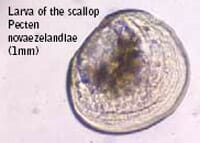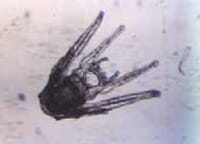
As a farmer, you may have noticed rumblings of how climate change from atmospheric greenhouse gas emissions will impact on ocean acidity as a result of increases in carbon dioxide absorption (CO2) by the ocean in the coming century. Well, so has everyone else. A growing body of literature is being put together led by countries such as Japan and Australia.
For domesticated farmed species changes in ocean acidity has the potential to impact on, and radically change, production cycles and production management. Some areas are highlighted here that will need researching in the coming decade. Research will inform the development of strategies, policy and planning to deal with the impact of climate change on marine farming. Increasingly acidified oceans and concurrent drops in pH in surface waters from CO2 build up, as the buffering capacity of the ocean is exceeded, will impact on reproduction and growth of broadcast spawners such as shellfish.
Firstly, in species such as shellfish and sea urchins (for example mussels, oysters, scallops and kina), sperm and eggs are broadcast into the water column where fertilisation takes place. In an increasingly acidic ocean, the ion exchange channels in the egg activated during fertilisation may be blocked, inhibiting this process.
Changes in pH may also affect the viability of sperm, impacting on swimming speed and the ability to fertilise. Essentially this means fewer embryos are available in progression to the larval stage of development and subsequent spat settlement on farms. Consequently, this has the potential to reduce fertilisation rates and may also affect fecundity.


Second, during the larval stage of development these species deposit calcium carbonate shells or exoskeletons, slowly adopting the early shape of the juvenile form as they progress to settlement. In an increasingly acidic environment, calcium deposition for the larval shell or exoskeleton is disrupted, which for such a small organism has significant implications for survival.
The potential for shell or exoskeleton structural integrity to be compromised before settlement has major implications for survival and collecting large numbers of spat for farms. Life in the plankton is tenuous at the best of times and in combination with disruption of calcium carbonate deposition it will be even more so.
Third, once larvae settle and grow into juveniles the process of shell and exoskeleton deposition continues. Along with this the 'meat' mass also grows as the animal feeds and develops into an adult form that is eventually of harvestable size. However, in an increasingly acidic environment thinning of the shell will occur due to sea-water absorption of calcium from the shell. This may make them more susceptible to damage and subsequent disease. Furthermore, if the animal increases energy expenditure in shell deposition and maintenance of metabolism to compensate and maintain growth rate relative to development, the potential exists for stunted growth.
Lastly, some potential positives exist because a farmer may end up in a situation where they have produced a smaller animal but with a larger meat to shell ratio. Some global markets prefer smaller animals with a 'meat' mass that fits nicely in the mouth for consumption. However, if problems with fecundity, fertilisation and early development mean less natural spat are available, it may be better to eliminate the impact of this on total production biomass on farms by relying on hatchery reared spat.
In the hatchery, animals can be bred that do not expend energy on reproduction. Animals could also potentially be selectively bred and reared to cope with an acidic environment during growth. In the future the industry may end up relying totally on the hatchery production of selectively bred triploid animals.
Food for thought.
October 2009


